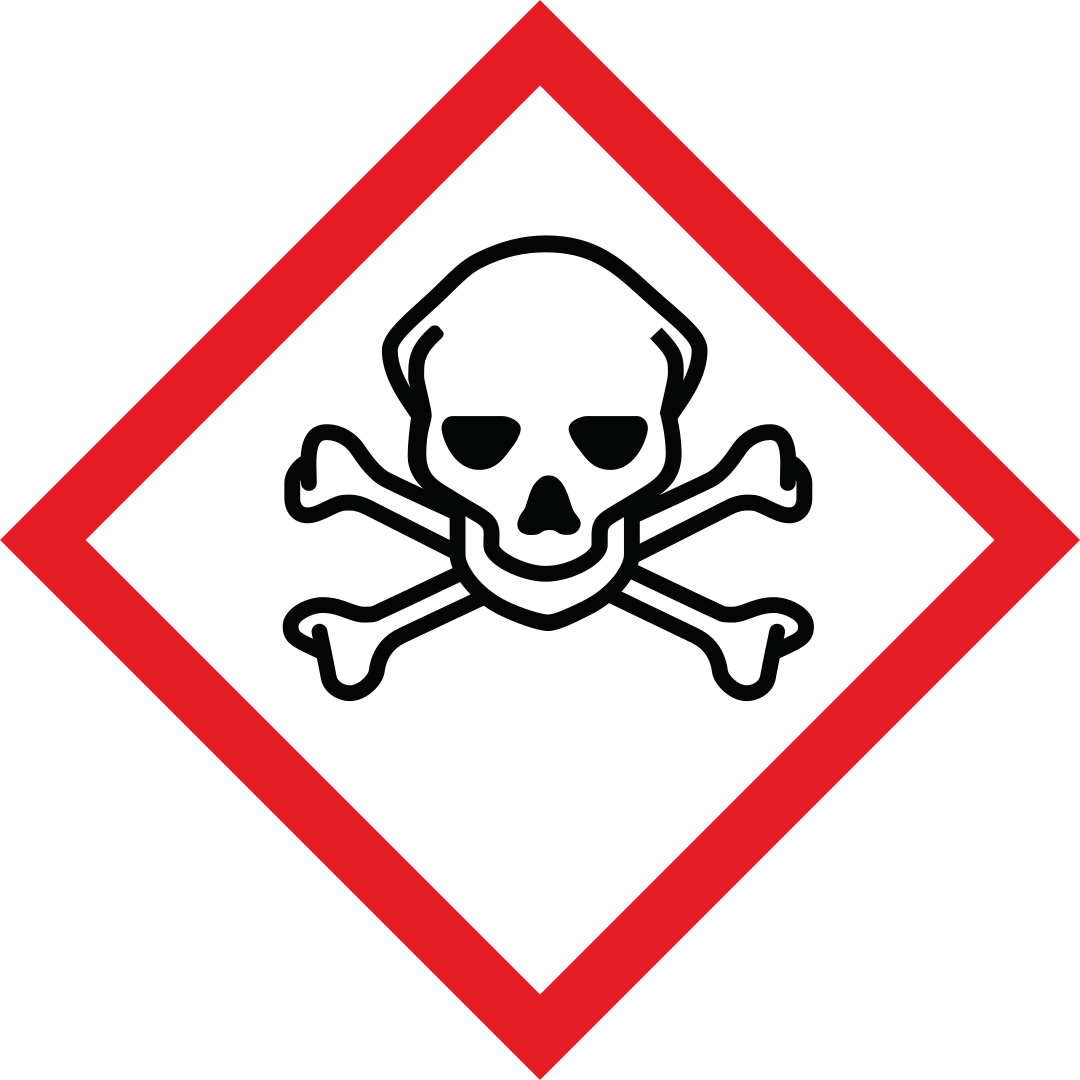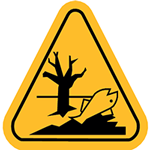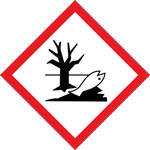You have 45 minutes to answer 50 multiple choice test mock questions in preparation for the Health, Safety and Environment CSCS Operatives and Specialists test. You need to answer at least 45 out of 50 questions correctly to pass. Answers may be reviewed after each question or at the end of the test!
Test Quick View
List of questions in above test (quick view). Click question box to reveal correct answer.
1. Your employer is conducting a risk assessment before you begin working on a roof. They will be assessing the risk to WHOM?
Check ALL that apply
AB
C
D
E
Correct Answer: A, D, E
Explanation: A risk assessment assesses hazards that put you or others at risk over the course of a job.
Explanation: A risk assessment assesses hazards that put you or others at risk over the course of a job.
2. You are asked to do work you are capable of doing, but have not received training for. What should you do?
Give ONE answer
AB
C
D
Correct Answer: D
Explanation: You must speak to your site manager or supervisor if you are being put in this position. If you do not have training, you may carry out a job dangerously - even if you have the necessary skills.
Explanation: You must speak to your site manager or supervisor if you are being put in this position. If you do not have training, you may carry out a job dangerously - even if you have the necessary skills.
3. You should expect to be consulted on workplace safety practices. TRUE or FALSE?
Give ONE answer
AB
Correct Answer: B
Explanation: Many sites encourage workers to participate in safety discussions and audits. This is because workers usually have a better understanding of on-site risks, and the efficacy of safety measures.
Explanation: Many sites encourage workers to participate in safety discussions and audits. This is because workers usually have a better understanding of on-site risks, and the efficacy of safety measures.
4. A Health and Safety Executive inspector issues a prohibition notice to your team at work. What should you do?
Give ONE answer
AB
C
D
Correct Answer: B
Explanation: Upon issue of a prohibition notice, all work connected to the unsafe activity must stop immediately.
Explanation: Upon issue of a prohibition notice, all work connected to the unsafe activity must stop immediately.
5. What should you do if you are not able to follow your safe system of work?
Give ONE answer
AB
C
D
Correct Answer: D
Explanation: If a safe system of work cannot be followed, adaptations need to be made under counsel. Work should not continue until you have found an authorised alternative.
Explanation: If a safe system of work cannot be followed, adaptations need to be made under counsel. Work should not continue until you have found an authorised alternative.
6. An absent colleague leaves your team unable to follow your safe system of work. What should you do?
Give ONE answer
AB
C
D
Correct Answer: B
Explanation: If you cannot follow your safe system of work, stop work and seek advice.
Explanation: If you cannot follow your safe system of work, stop work and seek advice.
7. What is the MAIN reason that respiratory hazards are so dangerous?
Give ONE answer
AB
C
D
Correct Answer: B
Explanation: Respiratory hazards can lead to the inhalation of harmful substances that cause disease and illness.
Explanation: Respiratory hazards can lead to the inhalation of harmful substances that cause disease and illness.
8. Respiratory hazards may lead to damage in which parts of the body?
Give ONE answer
AB
C
D
Correct Answer: A
Explanation: Your airways and lungs are at most risk, but disease can spread to other parts of the body too.
Explanation: Your airways and lungs are at most risk, but disease can spread to other parts of the body too.
9. If respiratory protective equipment (RPE) is required for a job, where can you acquire it?
Give ONE answer
AB
C
D
Correct Answer: A
Explanation: Your employer is legally obliged to provide all requisite RPE to you for free.
Explanation: Your employer is legally obliged to provide all requisite RPE to you for free.
10. What is ONE acute health condition you may develop after welding?
Give ONE answer
AB
C
D
Correct Answer: C
Explanation: Welding and hot working exposes you to metal fumes, the inhalation of which can cause 'metal fume fever'.
Explanation: Welding and hot working exposes you to metal fumes, the inhalation of which can cause 'metal fume fever'.
11. When managing materials, which is the BEST way to protect yourself from the risks created by dust?
Give ONE answer
AB
C
D
Correct Answer: B
Explanation: The best way to protect yourself against dust is to avoid creating it in the first place. Ensuring your materials are the correct size in advance will reduce the need for cutting or sanding.
Explanation: The best way to protect yourself against dust is to avoid creating it in the first place. Ensuring your materials are the correct size in advance will reduce the need for cutting or sanding.
12. Silica dust is NOT produced by which of the following activities?
Give ONE answer
AB
C
D
Correct Answer: C
Explanation: Plywood does not contain silica dust - the other materials do.
Explanation: Plywood does not contain silica dust - the other materials do.
13. You are clearing rubble from a cellar. What should you do before you start?
Give ONE answer
AB
C
D
Correct Answer: C
Explanation: It is advisable to spray rubble with water first to stop dust forming clouds when you move it.
Explanation: It is advisable to spray rubble with water first to stop dust forming clouds when you move it.
14. What is a residual current device (RCD)?
Give ONE answer
AB
C
D
Correct Answer: B
Explanation: RCDs will quickly cut off power if a problem is detected.
Explanation: RCDs will quickly cut off power if a problem is detected.
15. You see a drone flying on-site. What should you do?
Give ONE answer
AB
C
D
Correct Answer: A
Explanation: An on-site drone may be an authorised part of the project. Inform your supervisor if you see one operating unexpectedly.
Explanation: An on-site drone may be an authorised part of the project. Inform your supervisor if you see one operating unexpectedly.
16. What should you do with spent cannisters or cells after using a nail gun?
Give ONE answer
AB
C
D
Correct Answer: B
Explanation: Spent cells and cannisters are not general waste, and must be correctly disposed of.
Explanation: Spent cells and cannisters are not general waste, and must be correctly disposed of.
17. What function do these mats serve?
Give ONE answer
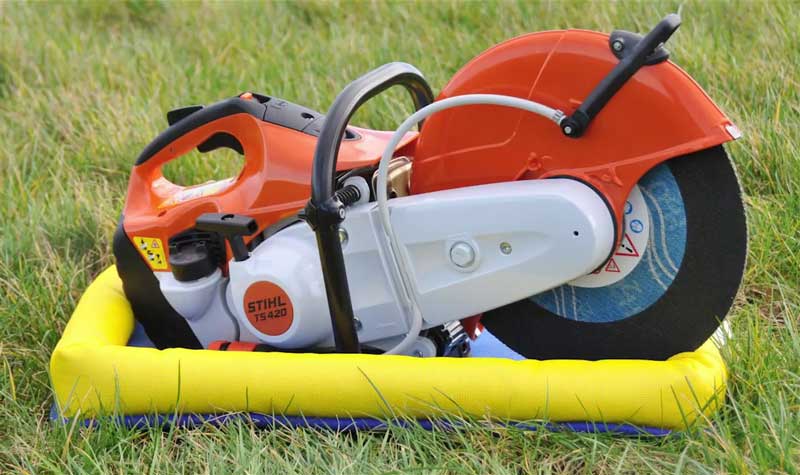
B
C
D
Correct Answer: C
Explanation: These mats prevent fuel from leaking into the ground during refuelling.
Explanation: These mats prevent fuel from leaking into the ground during refuelling.
18. HAVS may present alongside which two additional conditions?
Give TWO answers
AB
C
D
Correct Answer: B, D
Explanation: The circumstances that cause HAVS may also cause carpal tunnel syndrome and tennis elbow.
Explanation: The circumstances that cause HAVS may also cause carpal tunnel syndrome and tennis elbow.
19. Why will an employer begin health surveillance of an employee who is exposed to high vibration levels?
Give ONE answer
AB
C
D
Correct Answer: B
Explanation: Employers must begin health surveillance under these circumstances to ensure the employee is properly protected.
Explanation: Employers must begin health surveillance under these circumstances to ensure the employee is properly protected.
20. You are charged with hiring a company to transport waste off-site. What should you look for?
Give ONE answer
AB
C
D
Correct Answer: B
Explanation: Waste transport companies contracted by your site should be licensed and registered.
Explanation: Waste transport companies contracted by your site should be licensed and registered.
21. You are removing silty water from an excavation. What should be done with the water?
Give ONE answer
AB
C
D
Correct Answer: D
Explanation: Silty water is a pollutant, and must be treated before it can be safely discharged.
Explanation: Silty water is a pollutant, and must be treated before it can be safely discharged.
22. What symbol will you see on the container of hazardous substances that can harm aquatic life?
Give ONE answer
AB
C
D
Correct Answer: D
Explanation: You will see this sign: this is the shape of sign appropriate for hazardous substances.
Explanation: You will see this sign: this is the shape of sign appropriate for hazardous substances.
23. Which ONE of the following offers adequate edge protection?
Give ONE answer
AB
C
D
Correct Answer: D
Explanation: Edge protection must be rigid enough to stop people falling. Netting, plastic barriers, and rope are usually insufficient.
Explanation: Edge protection must be rigid enough to stop people falling. Netting, plastic barriers, and rope are usually insufficient.
24. How should you properly secure a ladder?
Give ONE answer
AB
C
D
Correct Answer: C
Explanation: Tying a ladder at the top is the best way to secure it.
Explanation: Tying a ladder at the top is the best way to secure it.
25. When is an accident involving falling equipment MOST likely to take place?
Give ONE answer
AB
C
D
Correct Answer: A
Explanation: Unloading equipment is a time when the risk of accident is high.
Explanation: Unloading equipment is a time when the risk of accident is high.
26. You are working at height, and have been equipped with an inertia reel. What is this?
Give ONE answer
AB
C
D
Correct Answer: C
Explanation: An inertia reel is a fast-acting, retractable fall arrest device.
Explanation: An inertia reel is a fast-acting, retractable fall arrest device.
27. What TWO factors often result in accidents involving overhead power lines?
Give TWO answers
AB
C
D
E
Correct Answer: A, D
Explanation: Many accidents result from bad weather conditions, or workers who are not vigilant about overhead lines.
Explanation: Many accidents result from bad weather conditions, or workers who are not vigilant about overhead lines.
28. How fast does electricity travel?
Give ONE answer
AB
C
D
Correct Answer: C
Explanation: Electricity travels at approximately the speed of light.
Explanation: Electricity travels at approximately the speed of light.
29. You are issued safety glasses as PPE to work with a disc cutter. Do you proceed?
Give ONE answer
AB
C
D
Correct Answer: B
Explanation: Do not proceed. Safety glasses only offer low-impact protection, and this is not sufficient when using a disc cutter.
Explanation: Do not proceed. Safety glasses only offer low-impact protection, and this is not sufficient when using a disc cutter.
30. Why is it important to obtain a hot works permit?
Give ONE answer
AB
C
D
Correct Answer: C
Explanation: Hot work permits help control and mitigate the additional fire risks created by these activities.
Explanation: Hot work permits help control and mitigate the additional fire risks created by these activities.
31. How must you store compressed gas when in use?
Give ONE answer
AB
C
D
Correct Answer: D
Explanation: Compressed gas must be stored upright.
Explanation: Compressed gas must be stored upright.
32. There is an electrical fire. Which TWO extinguishers can you use?
Give TWO answers
AB
C
D
E
Correct Answer: A, B
Explanation: Electrical fires can be put out with blue (powder) and black (carbon dioxide) extinguishers. You must NOT use any other extinguisher.
Explanation: Electrical fires can be put out with blue (powder) and black (carbon dioxide) extinguishers. You must NOT use any other extinguisher.
33. Why is asbestos a threat to health?
Give ONE answer
AB
C
D
Correct Answer: C
Explanation: Inhaling asbestos fibres can cause serious lung disease.
Explanation: Inhaling asbestos fibres can cause serious lung disease.
34. Which of the following is NOT an example of an on-site emergency?
Give ONE answer
AB
C
D
Correct Answer: B
Explanation: Fuel shortage is not an example of an on-site emergency.
Explanation: Fuel shortage is not an example of an on-site emergency.
35. Your colleague has fallen, and is finding it painful to move their leg. What should you do?
Give ONE answer
AB
C
D
Correct Answer: D
Explanation: Do not attempt to move injured parties. Call for medical assistance.
Explanation: Do not attempt to move injured parties. Call for medical assistance.
36. What may be an early sign you have contracted tetanus?
Give ONE answer
AB
C
D
Correct Answer: C
Explanation: Stiffness in the jaw and mouth is an early sign of tetanus. For this reason, it is also called "lockjaw."
Explanation: Stiffness in the jaw and mouth is an early sign of tetanus. For this reason, it is also called "lockjaw."
37. How can you mitigate the risk of contracting tetanus?
Give ONE answer
AB
C
D
Correct Answer: B
Explanation: Tetanus is contracted when the bacteria enter your body through cuts and wounds. Keep these covered at all times.
Explanation: Tetanus is contracted when the bacteria enter your body through cuts and wounds. Keep these covered at all times.
38. When clearing waste, you find you have been pricked with a hypodermic needle. What should you do?
Give ONE answer
AB
C
D
Correct Answer: B
Explanation: Always seek immediate medical advice if you have been pricked with a needle. Inform your supervisor of the incident.
Explanation: Always seek immediate medical advice if you have been pricked with a needle. Inform your supervisor of the incident.
39. What change/s in a colleague's work ethic might suggest they are experiencing stress?
Check ALL that apply
AB
C
D
Correct Answer: C, D
Explanation: People may react to stress by pushing themselves too far, or withdrawing from their work commitments.
Explanation: People may react to stress by pushing themselves too far, or withdrawing from their work commitments.
40. Where can you find support if you would like to improve your mental health?
Give ONE answer
AB
C
D
Correct Answer: A
Explanation: You can turn to all of these - and more - for help in improving and maintaining your mental health.
Explanation: You can turn to all of these - and more - for help in improving and maintaining your mental health.
41. What is the LEGAL status of legal highs?
Give ONE answer
AB
C
D
Correct Answer: A
Explanation: Psychoactive substances, also known as "legal highs", are illegal.
Explanation: Psychoactive substances, also known as "legal highs", are illegal.
42. Which class of drug is cannabis?
Give ONE answer
AB
C
D
Correct Answer: B
Explanation: Cannabis is a class B drug.
Explanation: Cannabis is a class B drug.
43. Which of the following contributes most towards your daily unit intake?
Give ONE answer
AB
C
D
Correct Answer: D
Explanation: One pint of 5% beer is 2.8 units, and exceeds your daily recommended intake.
Explanation: One pint of 5% beer is 2.8 units, and exceeds your daily recommended intake.
44. What is MOST likely to create high levels of fatigue in workers?
Give ONE answer
AB
C
D
Correct Answer: B
Explanation: High levels of fatigue are often the result of bad shift scheduling.
Explanation: High levels of fatigue are often the result of bad shift scheduling.
45. Which THREE of the following load properties must you know before lifting it?
Give THREE answers
AB
C
D
E
F
Correct Answer: A, C, F
Explanation: A load's weight and centre of gravity, and where it can be gripped, are all crucial properties you must know in order to safely lift it.
Explanation: A load's weight and centre of gravity, and where it can be gripped, are all crucial properties you must know in order to safely lift it.
46. You are storing a heavy load in an empty shelving unit. Which height should you store it at?
Give ONE answer
AB
C
D
Correct Answer: D
Explanation: Storing heavy loads at waist height will make them easier to pick up and put down.
Explanation: Storing heavy loads at waist height will make them easier to pick up and put down.
47. What does this sign indicate?
Give ONE answer
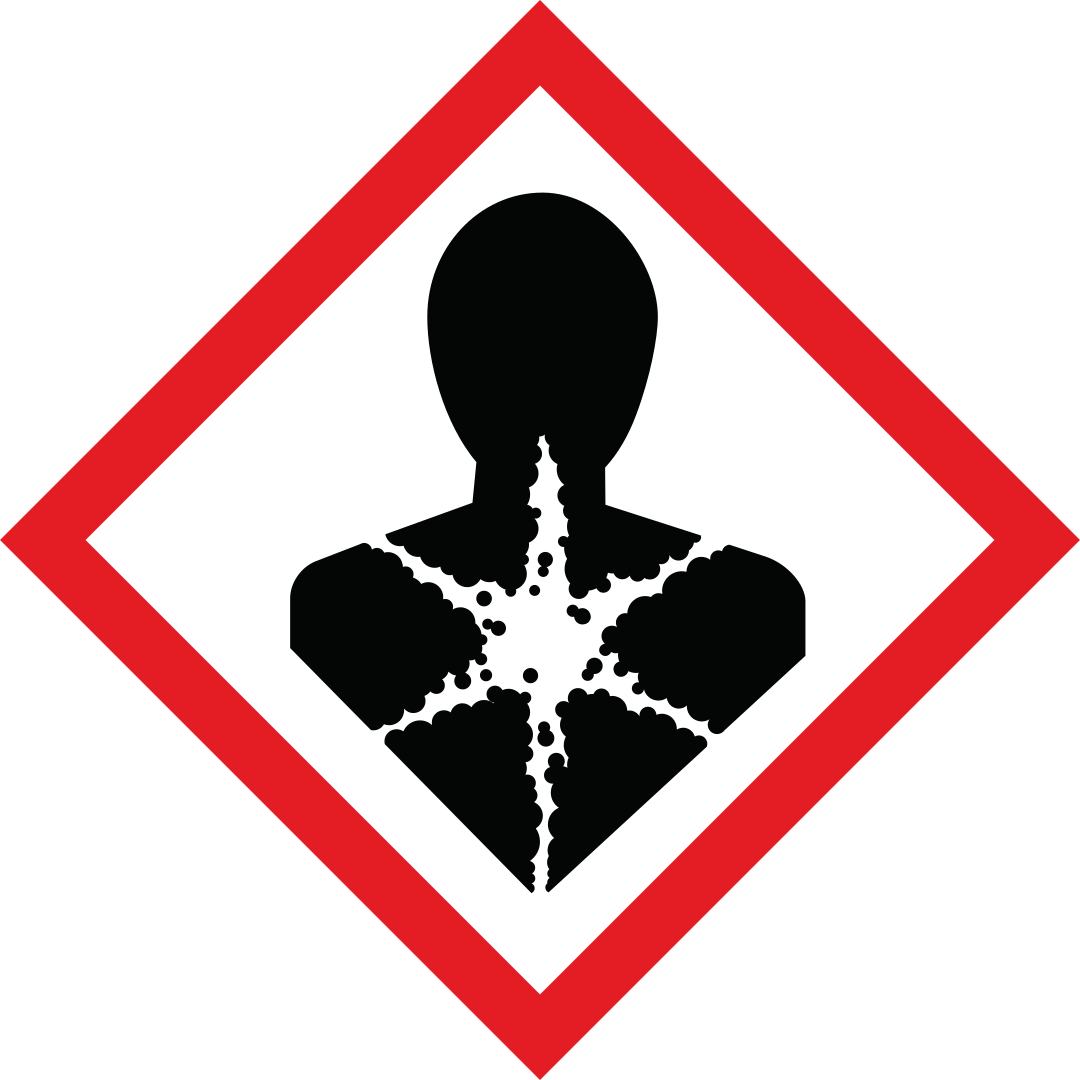
B
C
D
Correct Answer: B
Explanation: This sign indicates the substance may cause serious damage.
Explanation: This sign indicates the substance may cause serious damage.
48. You notice a 'no thoroughfare' sign has been knocked crooked by a passing vehicle. What should you do?
Give ONE answer
AB
C
D
Correct Answer: B
Explanation: You must report any damaged signs so they can be fixed.
Explanation: You must report any damaged signs so they can be fixed.
49. What are TWO important details you must know about a load before lifting it?
Give TWO answers
AB
C
D
E
Correct Answer: B, E
Explanation: Accidents can be caused by people not knowing a load's correct weight and centre of gravity.
Explanation: Accidents can be caused by people not knowing a load's correct weight and centre of gravity.
50. What are TWO conditions which must be met for you to operate plant?
Give TWO answers
AB
C
D
E
Correct Answer: A, D
Explanation: Plant operators must be trained, competent, and authorised.
Explanation: Plant operators must be trained, competent, and authorised.


